6 Customer Success Metrics to Focus On in 2024

As face-to-face customer interactions become increasingly rare, it’s important to stay connected with your customers and put all the right tools and processes in place to ensure customer success. By keeping an eye on your customer success metrics, you allow your organization to gain valuable insight to maintain profitable, long-lasting relationships with your customers.
What is customer success?
Simply put, customer success is when the customer achieves the desired goal while using your products or services. It’s relationship-driven and results in client satisfaction, upsell opportunities, a decrease in churn, and increased revenue.
Continue reading to find out 6 customer success metrics to focus on in 2024.
What is customer success in SaaS?
With the arrival of the SaaS (Software-as-a-Service) concept, things have changed. Software licenses are no longer bought only once for long-term use. They are rented for a fixed period (trial period, monthly, yearly, etc.), which makes sense considering the speed at which online technologies evolve. The customer now decides whether the software meets all of his criteria or not. If the customer experience is not a success on all levels, they may well decide not to renew the subscription. We live in a world with so much competition that customer success must be a priority for companies.
Why is measuring customer success important?
The answer is simple. No customer success means no success for you, either. Proactive measures must be implemented to gain a deeper understanding of your customers’ needs and why they use your products or services. That way, you’re more likely to have happy and loyal customers.
That’s what customer success is all about.
Every SaaS company should be able to predict customer success to better manage revenue and profit. To demonstrate the return on investment (ROI) of your hard work, measuring customer success metrics is a must! It’s important to note, however, that customer success is not a metric in itself.
How to measure customer success
There are many customer success KPIs or metrics that companies should track. Here are 6 key metrics that we feel you should be focusing on to maximize value for your customers in 2024:
Customer success metric #1: Customer Churn Rate
Customer Churn Rate is one of the most important customer success metrics. It’s the number of customers or subscribers who decide to stop using your products or services during a given period.
In today’s competitive world, customers should never be taken for granted. Loyal customers provide stable revenue and financial flexibility. The subscription business model is becoming more and more popular. That said, companies must keep up with market developments to increase customer success and decrease churn rates.
If you thought you would receive $3,000 from a customer over a 12-month period ($250/month), but he/she cancels their subscription after the first month, you’ve just lost $2,750.
How to Calculate Customer Churn Rate
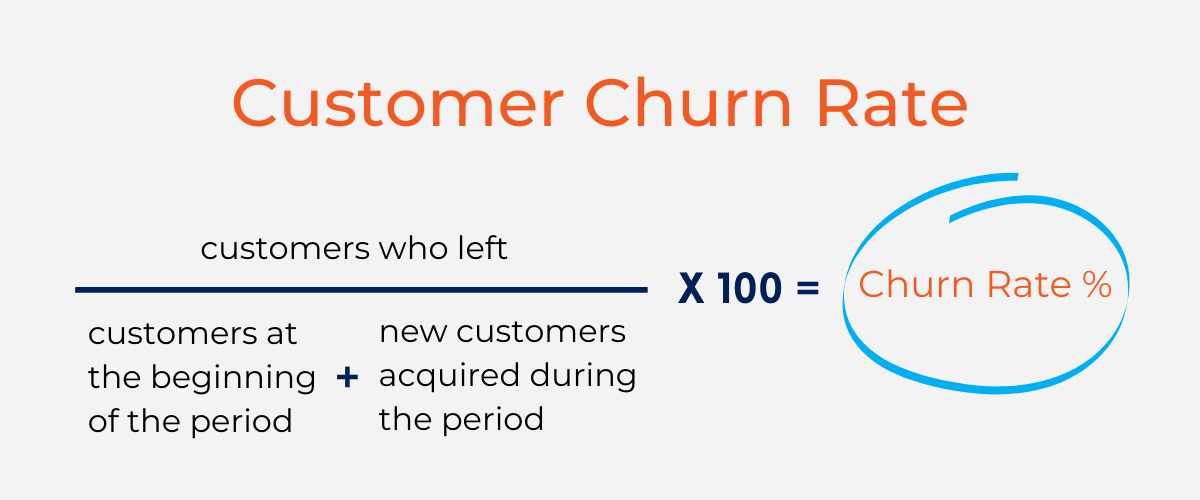
Customer Churn Rate Formula
By understanding the reasons behind churn, it will be easier to implement solutions to prevent it from happening again. Moreover, customer churn will directly affect your financial metrics.
Customer Success Metric #2: Customer Retention Cost (CRC)
Implementing customer success strategies is good practice to limit customer churn, as customer retention is usually cheaper than customer acquisition. That said, you’ll still want to stay cost-effective, so it’s important to look at your Customer Retention Cost (CRC). This customer success metric helps determine how much you spend to retain a customer and at what point you should “fire” a customer.
How to Calculate Customer Retention Cost (CRC)
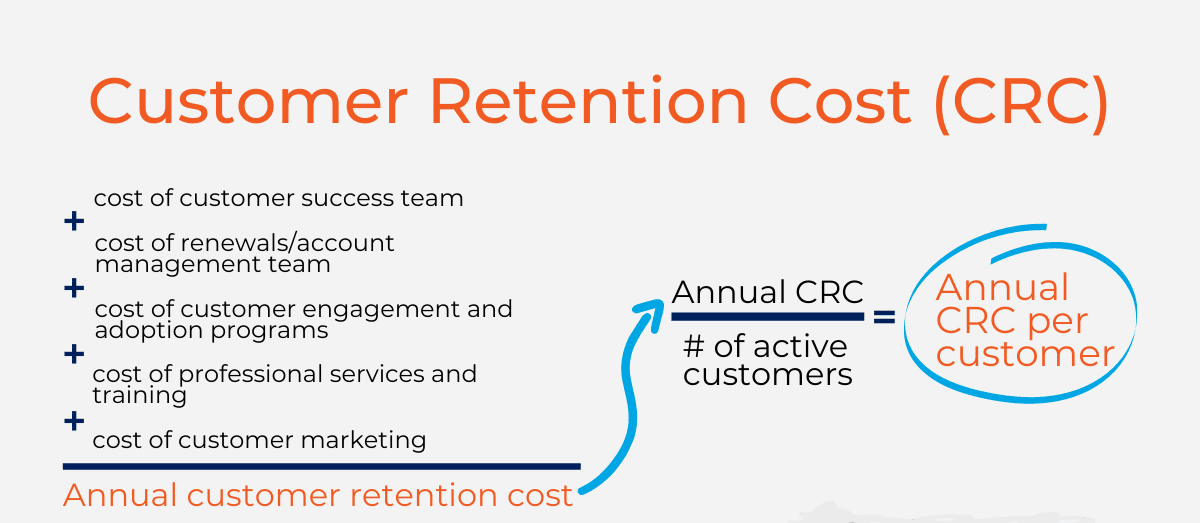
Customer Retention Cost Formula
To measure CRC, you first determine the annual cost of your success strategies (customer success team + account management team + customer engagement programs + training + marketing, etc.) and then divide this number by the number of active customers.
Customer Success Metric #3: Net Promoter Score (NPS)
Net promoter score is one of the most popular customer success metrics. To obtain your Net Promoter Score, you need to ask your customers a simple question: How likely would you be to recommend our company/product/service? The answers are based on a scale from 0 to 10:
- 9 to 10 = Promoters
Promoters are more likely to bring clients and stay loyal to your company.
- 7 to 8 = Passives
Passives are in between promoters and detractors
- 0 to 6 = Detractors
How to Calculate Net Promoter Score (NPS)

Net Promoter Score Formula
Let’s say your customer service department surveys the 125 customers with whom they interacted during the month. If the results of your survey show 100 promoters, 20 passives, and 5 detractors, your NPS would be 76%.
Promoters: 100 /125 = 80% | Detractors: 5/125= 4% | NPS = 80% – 4% = 76%
NPS helps predict your business growth; if you have more promoters than detractors, you know your customers will help generate more leads with great word-of-mouth.
In 2022, retail e-commerce sales were estimated to exceed 5.7 trillion U.S. dollars worldwide, and this figure is expected to reach new heights in the coming years. (Statista, 2023). That said, customers rely heavily on online reviews to make informed choices. Reviews are the new word-of-mouth. It is, therefore, important to ensure your customers’ satisfaction, so they become promoters of your brand and give you exceptionally good reviews.
Customer Success Metric #4: Customer Satisfaction Score (CSAT)
Whereas Net Promoter Score measures a customer’s likelihood of recommending your brand, the Customer Satisfaction Score (CSAT) measures a customer’s satisfaction after a specific interaction with a product or service.
The advantage of CSAT is that it’s one of the easiest customer success metrics to track. It provides a quick, simple way of collecting feedback at any touchpoint across the customer journey. It makes it easier to identify areas of improvement.
How to Calculate Customer Satisfaction Score (CSAT)?
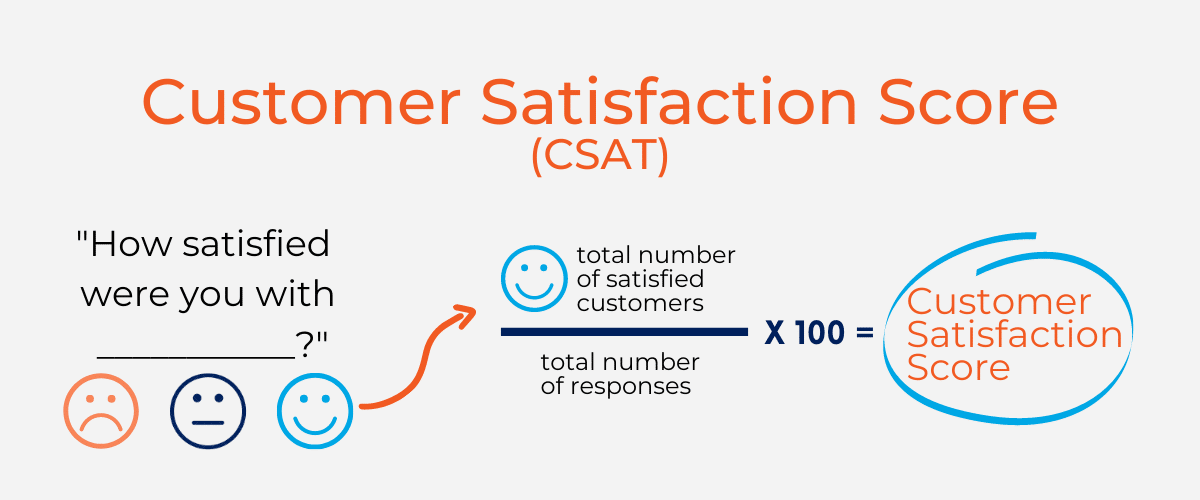
Customer Satisfaction Score Formula
Most often, you will obtain a CSAT through a short survey that includes rating scales such as emojis, stars, or numbers. The survey is ideally sent immediately after interacting with a customer to facilitate honest, unbiased answers.
To calculate your CSAT, you first divide the number of positive responses by the total number of responses from your customer survey. You then multiply this number by 100. What’s considered a good score for you will depend on your industry. That said, a score of 75% will put you right on the national average.
Customer Success Metric #5: Customer Lifetime Value (CLV)
The Customer Lifetime Value (CLV) is another important metric that shows the total profit that you expect a customer to generate over the course of their relationship with your company.
With so much emphasis being placed on customer loyalty as a pillar for customer success, this metric puts a price on this loyalty. It’s also a great way to assess your customer profitability and determine how much you should be spending on customer acquisition.
How to Calculate Customer Lifetime Value (CLV)?
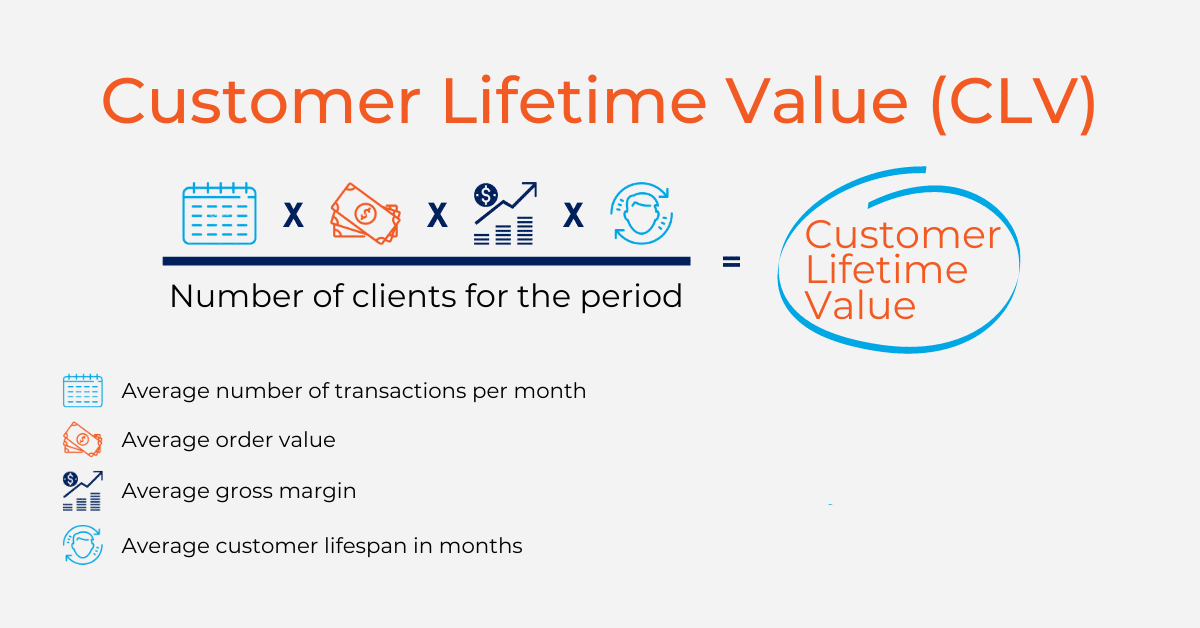
Customer Lifetime Value Formula
There are many methods of calculating CLV, each one more complicated than the next. Let’s take a look at a simplified formula:
Calculate your average:
- Number of transactions each month
- Order value
- Gross margin
- Customer lifespan (in months)
CLV = (1) x (2) x (3) x (4)
Customer Success Metric #6: Renewal Rate
The Renewal Rate is a highly relevant customer success metric for software-as-a-service (SaaS) businesses that follow a subscription-based model. It measures the percentage of customers who renew their subscription at the end of the subscription period.
A high Renewal Rate indicates customer success since it implies stable, recurring revenue from current customers. In turn, it allows you to focus more attention on acquiring new customers.
How to Calculate Renewal Rate?
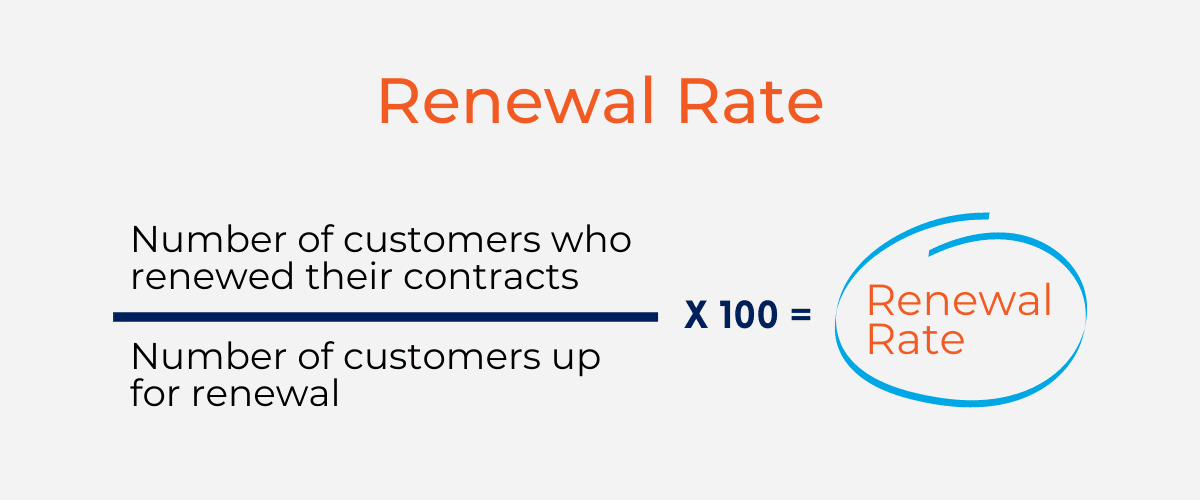
Renewal Rate Formula
You can easily calculate your Renewal Rate by dividing the total number of customers who renew their subscription by the total number of customers up for renewal.
Conclusion
With competition for customers fiercer than ever, having the right customer success metrics for your company is key to retaining your current customers and acquiring new ones. The 6 metrics described above should take you one step closer to achieving success for your clients in 2024.
For a more comprehensive list of customer success metrics, make sure to check out this blog.



